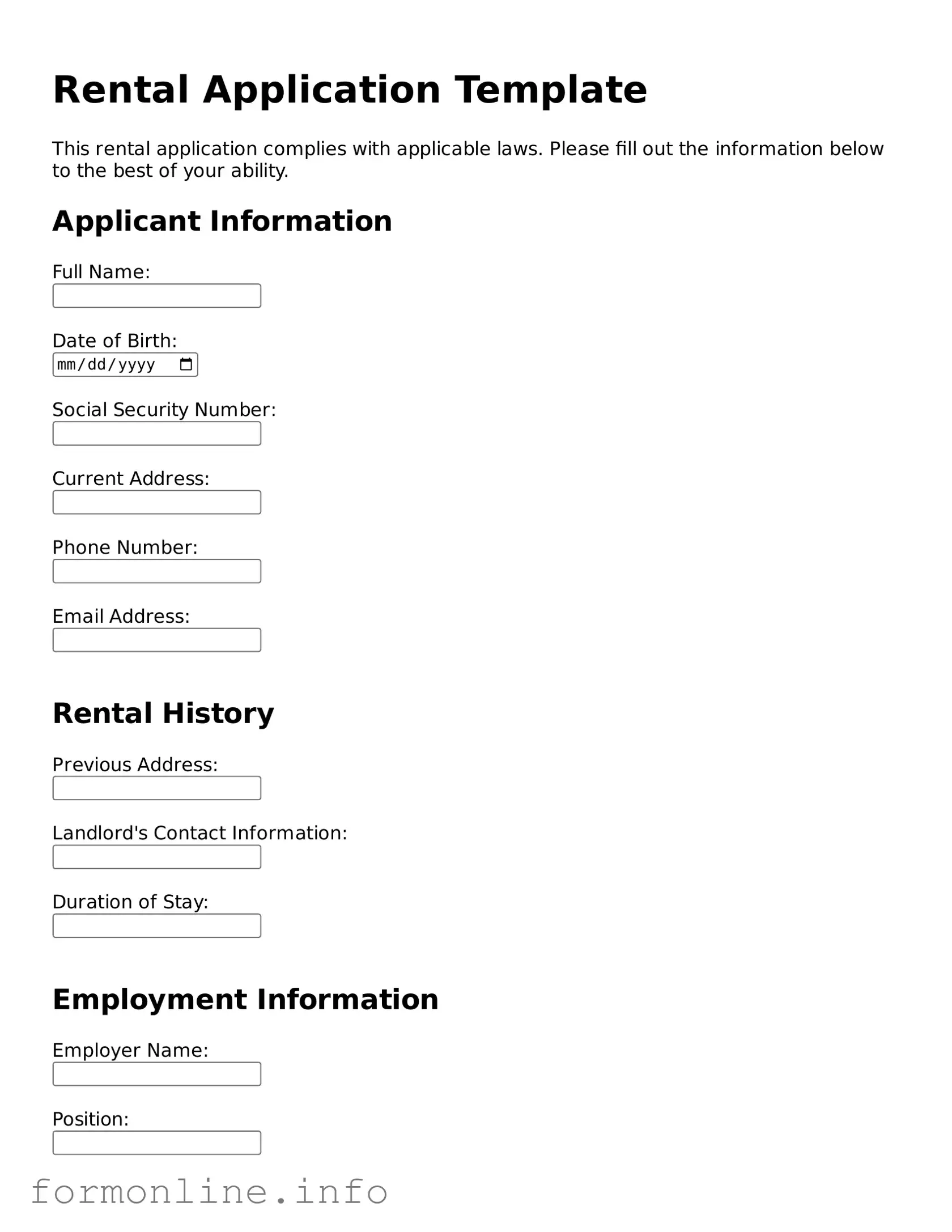Printable Rental Application Form
A Rental Application form is a document that potential tenants complete to provide landlords with essential information about themselves. This form typically includes details like employment history, rental history, and personal references, helping landlords make informed decisions about prospective tenants. Ready to find your new home? Fill out the form by clicking the button below!
Prepare Form Online
